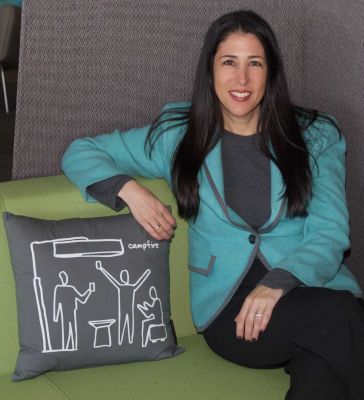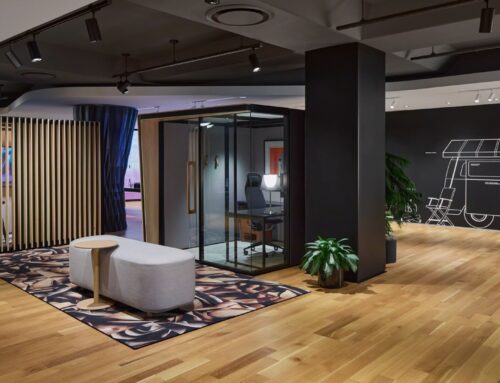Executive Suite: Meredith Waldner Stern, Farmingdale
Updated March 1, 2015 1:47 PM
By CHRISTINE GIORDANO. Special to Newsday

Photo Credit: Ed Betz
With the millennial generation demanding groupthink areas, technology becoming ever more important, and studies linking cancer, heart disease and diabetes to sitting for more than eight hours a day, office spaces are changing, says Meredith Waldner Stern, 44, president of Waldner’s Business Environments in Farmingdale.
Cubical walls are dropping, desks are adjusting to standing-and-sitting routines, and Stern’s firm is creating new spaces with walls you can talk to, collaborative areas, and ergonomic furniture. The business, launched by Stern’s grandfather as a cigar and stationery shop in 1939, added office furniture, and now remodeling, with locations also in Manhattan and Westchester. Stern became president in 2009. The firm recently handled part of the Swedish music streaming company Spotify’s relocation in Manhattan, installing some 400 height-adjustable workstations.
Christine Giordano: How are millennial office spaces different?
Meredith Waldner Stern: It used to be everyone had their little 6-by-6 workspace. Now a lot of research has shown that people work better in more casual environments… . Little breakout collaborative areas throughout the space will encourage people to move, maybe to communicate with different departments, and just foster creativity and new ideas.
CG: How are breakout areas furnished?
MWS: People don’t have to be chained to their desks to access technology anymore. You’ll see areas that not only have soft seating, but the opportunity to plug in, to have electronic-type of mediums, to brainstorm right there, whether it’s mobile smart boards or electronic whiteboards or even just traditional whiteboards or flip charts.
CG: What was the Spotify office project like?
MWS: Exactly what you would expect: a big, lofty space, a lot of height-adjustable stations, so people work in very different ways. Very wide open, very collaborative, very industrial.
CG: How are health-care office environments changing?
MWS: A lot of furniture to protect the safety of nurses, for example chairs that will help them not have to lift patients from the bed the chair, chairs come up higher. And technology is now integrated into the waiting rooms so that you could sit down with your laptop and plug in.
CG: And education spaces?
MWS: The big trend there is also collaboration … There’s a lot more mobility. So now a teacher might be in the center of a room with all the students facing in and maybe they break up into groups. So you’ll see a classroom change throughout a day to four different configurations based on who the teacher is and what the task is and the furniture needs to support that.
CG: What’s new and exciting to you?
MWS: How technology continues to be integrated with furniture. It’s not even just about charging, it’s about imaging. You can image different things on the wall itself. Teleconferencing is part of the furniture, or it’s part of the wall within your office space.
CG: What’s going on with cubicles?
MWS: Definitely the lowering of the walls. In some areas they’ve completely disappeared, and it’s all just what we call “benching” – just work surfaces. So you can see everybody and everything, and everyone can communicate, [but] now people don’t talk as loudly.
CG: Your grandfather Daniel passed away last summer at 101. Did he teach something that carries through today?
MWS: He always said that you treat everyone that you work with the same, regardless of what their role is. He was a wonderful person. And he really had such a high level of respect for the people he worked with and for the clients.
CG: What’s best way to add comfort?
MWS: Buy the best chair that’s within your budget, because a chair is the most important part of your whole office. It affects your comfort more than anything else.
CG: You made president before age 40. Are there advantages to being so young?
MWS: It is a family business, and I have been exposed to the industry my whole life. I also believe bringing a relatively younger perspective adds an appreciation and commitment to the use of technology.








